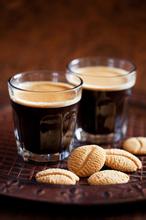Nicaragua coffee flavor taste introduction lemon tree estate Nicaragua coffee producing area
Manor name: El Limoncillo (Lemon Tree Manor)
Production area: Matagalpa (Mattapa)
Town: Yasica Norte
The manor was founded in 1932.
Maria Ligia Mierisch, the landowner.
Manor: 950m to 1300 m above sea level
Cultivated coffee varieties: 10%Maragoipe, 30% Pacamara, Bourbon 25%, Caturra 20%, Java 15%
The coffee produced is treated by 95% water washing and 5% sun exposure.
Rear drying: Sun Dried-Patios
Flowering period: January to February, mid-March, May to June
Harvest period from December to March
The taste of the cup:
Dry fragrance: vanilla, chocolate, sweet spices, sweet lemon, sugar, blueberry, cream, citrus
Wet fragrance: vanilla, cream, pear, special tea fragrance
Sipping: vanilla, tea, sweet grapefruit, fat in the mouth, sweet mint chocolate, tea tree essential oil aroma, chocolate, black sugar, walnut fruit (peach, plum), cream, lasting sweetness this variety of coffee is very beautiful in appearance, is the Java-long berry from Nicaragua.
Java species are still planted in Java at present, but because of their low yield and poor disease resistance, many farms have changed to new varieties. From the appearance, the traditional Java bean type is quite similar to Typica species, generally seen Java bean type is short and slender (that is, short berry-shaped), while long-grain (long berry) Java species are even more rare. In addition to the rarity of variety and appearance, this coffee cup tests flavor, and this Java seed can meet the needs of all parties: scarcity, good flavor, and the story of this species being planted!
The coffee farm that produces this variety is called lemon tree, El Limoncillo. Since it was tried to plant in 2001, it has been planted in five family manors because of its charming flavor, but the total output is still very small, and the best one is less than a hundred bags a year.

Important Notice :
前街咖啡 FrontStreet Coffee has moved to new addredd:
FrontStreet Coffee Address: 315,Donghua East Road,GuangZhou
Tel:020 38364473
- Prev

Nicaraguan Coffee Manor production area introduces Nicaraguan Coffee Flavor and taste Los Congo Manor
When tasting Nicaraguan coffee, it is best to drink cold water first, so that you can better feel its mellow taste. Drink coffee while it is hot, because the tannins in Nicaraguan coffee are easy to change during cooling, and the taste becomes sour, which will affect the flavor of the coffee. You can add the right amount of sugar, and then add cream. Enjoy a cup of high quality Niga
- Next

Introduction of Paradise Bird Manor Coffee Flavor in Papua New Guinea
Papua New Guinea is located in the eastern part of the Indonesian territory of the island of Irian Jaya. Papua New Guinea has established its position as a boutique coffee brand since 1937, when bourbon species from the Blue Mountains were first planted. Small-scale coffee farms in alpine areas mainly grow this kind of coffee, which has a natural environment similar to that of the Blue Mountains in Jamaica. Papua New
Related
- Does Rose Summer choose Blue, Green or Red? Detailed explanation of Rose Summer Coffee plots and Classification in Panamanian Jade Manor
- What is the difference between the origin, producing area, processing plant, cooperative and manor of coffee beans?
- How fine does the espresso powder fit? how to grind the espresso?
- Sca coffee roasting degree color card coffee roasting degree 8 roasting color values what do you mean?
- The practice of lattes: how to make lattes at home
- Introduction to Indonesian Fine Coffee beans-- Java Coffee producing area of Indonesian Arabica Coffee
- How much will the flavor of light and medium roasted rose summer be expressed? What baking level is rose summer suitable for?
- Introduction to the characteristics of washing, sun-drying or wet-planing coffee commonly used in Mantenin, Indonesia
- Price characteristics of Arabica Coffee Bean Starbucks introduction to Manning Coffee Bean Taste producing area Variety Manor
- What is the authentic Yega flavor? What are the flavor characteristics of the really excellent Yejasuffi coffee beans?

